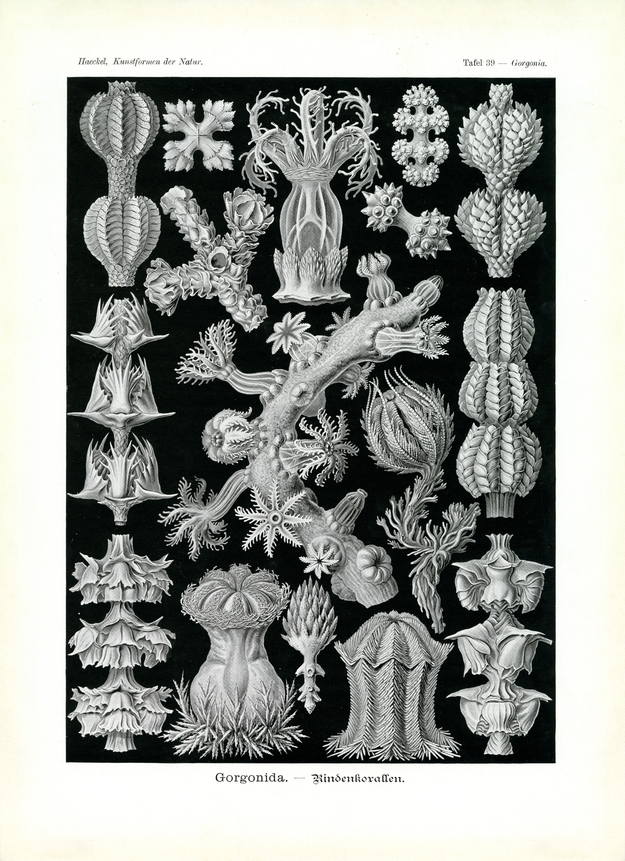Translation of the original German introduction by Ernst Haeckel:
Phylum of Cnidaria (Nesseltiere); - subclass of Anthozoa (Korallen); - legion of Alcyonaria (Kranzkorallen); - order of Octocoralla (achtstrahlige Kranzkorallen).The family of Gorgonida forms a diverse group (with more than 300 species) within the order of eight-radiant Octocoralla (Kranzkorallen). All corals of this family form formidable colonies or Corma that are grown onto the seafloor at their bases; many are characterized by delicate forms and a variety of colours (especially yellow, orange, red, and violet). The individual Polyp or ‘Coral-person’ that compose colonies branching off like twigs or trees is usually microscopically small; along the colony and its branches they are at times ordered in regular rows, at times whore-like or in an irregular way. Each individual Polyp (fig. 1, 13, 15) carries a corona of eight pinnate tentacles; they are stretched out or folded back, amalgamated or pulled in (fig. 9).
The solid skeleton or supporting frame of the Gorgonida always consists of two different parts: an inner ‘axis skeleton’ that forms a corneous or calcified shaft (not visible on our plate), and an outer ‘crust skeleton’ in which the individual personae are attached. Polyps with their main axis being set vertically against the axis of the colony are hanging in the crust connected by numerous feeding vessels; these ‘stomach vessels’ originate from the eight-radiant stomach cavities of the individual Polyps. The soft crust retains firmness by incorporating extremely numerous small lime bodies (Spicula). The shape of these spikes is diverse and usually most delicate (fig. 2, 3, 7, 14).
Translation by VR Translators Bangalore
We've scanned the original lithography at 1200dpi on the Epson A3 scanner of A3 scanner huren. You can download a 400dpi JPEG here.
